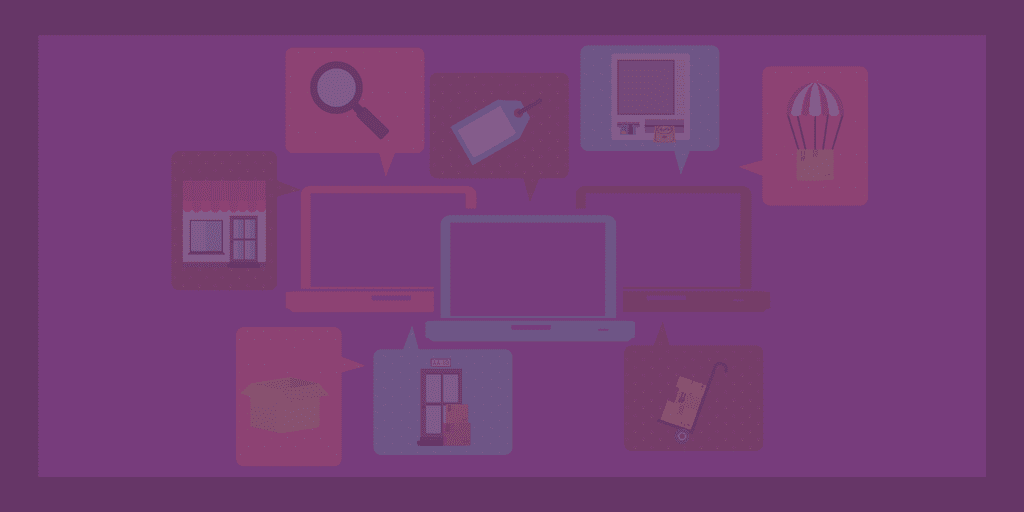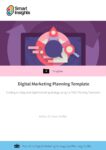Marketing can suffer from a lack of flow, especially when it's interruptive in nature, but the results are impressive when the two concepts come together
As a self-confessed app junkie who automates everything possible, it’s safe to say I’m a fan of things like web personalization and marketing automation. When lead scoring, triggered emails, personalized experiences, reusable nurtures, multiplatform integration, and analytics come together to form a holistic strategy, that brand of beautiful synergy gets me excited.
All this automation doesn’t come without a cost, however. Automated engagement strategies focus primarily on email, which has inherent flaws. Email can be a highly effective channel, but it's not without its shortcomings. Those who do agree to exchange their email address for something of value don’t always see, open, or click the content they receive.
Download FREE Resource – Digital marketing plan template
Our popular marketing planning template built on the Smart Insights RACE planning system.
Access the Digital marketing plan template
According to the latest email stats from Constant Contact, the highest open rates top out at about 25 percent; the lowest hover close to 10 percent. At best, that means three out of every four recipients won’t even open your email — let alone read it and follow your call to action. That report indicates click-through rates max out at about 15 percent, though most are less than 10 percent.
There are a variety of reasons for these metrics, but sometimes the fault lies with us.

Better Experiences Through Flow
“Flow” refers to a sensation of total, engaged focus in an activity with an elevated level of enjoyment and fulfillment. The first person to recognize flow, psychologist Mihaly Csikszentmihalyi, gave a fascinating TED Talk on the subject. I first encountered the idea as my company reworked its brand story. Since that discovery, flow has served as the guiding principle for the experiences we create — not the least of which is articulated through marketing.
Marketing can suffer from a lack of flow, especially when it's interruptive in nature, but the results are impressive when the two concepts come together.
As I researched flow, I realized that the state of total immersion the concept describes applies in multiple marketing contexts. It’s even more broadly applicable when we’re talking about digital experiences. Marketers contend with countless distractions for consumer attention, which can make even the simplest goals difficult to achieve. The risk of failure isn’t just present online; it’s overwhelming.
Flow helped me understand how a handful of simple principles can create online experiences that maintain the attention of my target audiences. With flow, every experience we create for customers must have a logical “next step” to extend interactions into conversations. This approach creates a series of rewarding experiences that ultimately lead to total immersion — or flow — for the audience.
To create flow, marketers must eliminate distractions, establish clear goals, and design experiences that enable potential customers to meet those goals without any confusion. On the back end, marketers need to communicate their progress and failures, optimizing experiences as they go. Only by following these steps and eliminating the fear of failure can we can create experiences that achieve flow.
A Match Made in Heaven
Blending digital marketing with psychology isn't new, and it’s not as difficult as you might think. Follow these five tips to create the optimal conditions for flow in the digital experience:
1. Set Concrete Goals
From email to PPC to content personalization, ensure every experience leads to the next step in your process. Users who complete small goals should move to larger goals, which in turn steer them toward even larger goals. This linkage creates a series of rewarding experiences that ultimately lead to flow.
For goals that extend beyond single browsing sessions, deliver feedback on progress to drive further engagement across channels. This applies both to the customer journey and to the creation of experiences that support it. When people feel they have something left to achieve, such as fulfilling that next step in a maturity model, they’re willing to come back for more. This provides you with ideal opportunities for further engagement.
2. Provide Clear, Timely Feedback
With form completions and other user interface elements, like slide-out widgets and modals, always provide a response and a recommended next step. Ad targeting should reflect specific recent behavior from the user to personalize the experience and encourage continued engagement. When feedback occurs directly after (or midway through) the completion of an action, users feel a stronger association between their action and the outcome.
When customers experience errors, provide useful information to avoid missed opportunities. Give them an option to recover their progress or reconnect, including paths to solutions for the more technically inclined.
3. Balance Challenge and Skill
If I were to challenge LeBron James to a pickup game, he probably wouldn’t feel very invested in the competition. Just as a professional athlete would be bored when facing off against an amateur, skilled users require different levels of engagement. We have to find a way to keep challenge in step with skill.
Follow user experience best practices to facilitate goal completion. Make things simple, but never so simple that anything feels tedious. Throughout this process, an ongoing sense of accomplishment is absolutely paramount.
4. Eliminate Distractions
Create experiences that emphasize the relevant and de-emphasize the irrelevant. Consider alternatives to interruptive techniques, like modal windows, which may be effective but are loathed by people.
When a question of relevance arises, defer to user experience over your own goals. What would a person within this experience want to do? What job can you help the user accomplish? Use the principles of flow to create a framework that builds upon nurture campaigns — and furthers your story.
5. Erase the Fear of Failure
Don’t allow doubt to disrupt flow. Ensure confidence is built at every touchpoint by fulfilling expectations.
Whether someone clicks through from PPC or email, reinforce your messaging to meet expectations. In addition, ensure that wayfinding conventions, breadcrumb navigation, search, favorites, recently viewed, and other navigation elements make it easy for people to orient themselves. Users with the freedom to engage are more likely to experience flow than those forced into a series of dictated actions dictated.
Flow might have begun in psychology, but its concepts apply just as well to marketing as they do in our personal lives. By following these strategies, marketers can create flow for their audiences and turn curiosity into engagement.
Thanks to Sean Schroeder for sharing their advice and opinion in this post. Sean Schroeder is the CCO of
Blueriver and co-founder of
Mura Digital Experience Platform.A former graphic designer and front-end developer, Sean is a self-confessed app junkie currently consumed with creating content-driven experiences that spark meaningful, relevant connections. You can connect with him on
LinkedIn.







